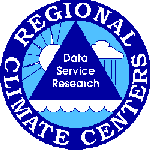Sierra Rotors Project
The Sierra Rotors Project is an NSF-funded project to study mountain-wave induced rotors in the lee of the Sierra Nevada in Owens Valley. The rotors, intense horizontal vorticies with strong turbulence, can pose severe aeronautical hazards. The eastern slopes of the southern Sierra Nevada make up the tallest, steepest, quasi-linear topographic barrier in the contiguous United States, and are well-known for generating large-amplitude mountain waves and strong rotors over the Owens Valley. The main objective of this project is to establish quantitative characteristics of the rotor behavior as well as to evaluate the extent to which current operational mesoscale models can reliably forecast the occurrence of rotors.
The core of the instrumentation in the Project is the DRI network of 16
automatic weather stations located in between Independence and Manzanar
in the central part of the Owens Valley. The data presented here is
transmitted from the stations by telemetry using 900 MHz
spread-spectrum radios to a base station in the Valley, and then
relayed to DRI through the Internet, making it accessible in near
real-time.

|
Map Courtesy of 
|
Click on site of interest for more information.
Data is subject to review and verification.
Click here to see the Owens Lake Dustcam
(Courtesy of the Great Basin Unified Air Pollution Control District(
Project inquiries contact
| Vanda Grubisic Division of Atmospheric Sciences Desert Research Institute 2215 Raggio Pkwy Reno, NV 89512-1095 |
phone: (775) 674-7031 fax: (775) 674-7016 email: grubisic@dri.edu |
Composite Daily Summaries
Cooperating Agencies:
 Desert Research Institute |

Western Regional Climate Center |

National Science Foundation |
Western Regional Climate Center, wrcc@dri.edu